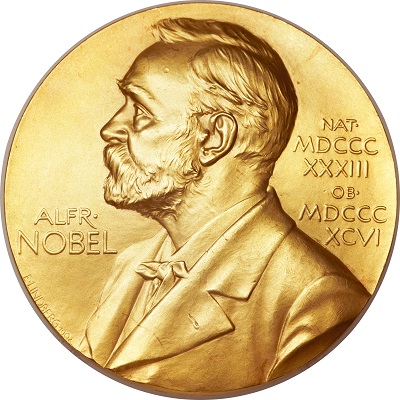Almost everyone knows the story behind the Nobel Prize. We know how Alfred Nobel’s invention of dynamite made him feel obliged to create an icon of peace that neutralizes the unintentional evil uses of his invention.
Attempting to create a safe explosive in 1846, Ascanio Sobrero carefully heated a drop of nitroglycerine, a compound derived from heating glycerol with concentrated nitric and sulfuric acid, in a glass test tube. Suddenly, the drop exploded and sent glass fragments flying into Sobrero‘s face and hands, which scarred him for life. Sobrero, who initially wanted to use the explosive for peaceful purposes, destroyed his notes to keep his invention a secret. However, the discovery of the explosive could not be kept quiet for long; Sobrero‘s invention was soon discovered and tested for its military and commercial applications. When Charles Crocker and James Strotbridge shipped nitroglycerine crates to a construction company in San Francisco in 1866, the crate exploded resulting in the death of 15 people. Outraged with the catastrophe, the Californian legislature confiscated all private stocks of nitroglycerine and banned its transportation within the State.

When Alfred Nobel attempted to stabilize nitroglycerine, he succeeded in producing a powerful, yet, safe explosive that he named dynamite. Nobel obtained patents for his invention: in England on 7 May 1867, and in Sweden on 19 October 1867. He originally sold dynamite as "Nobel's Blasting Powder". Later on, he developed a safe, cheap, efficient storage means for his dynamite powder. He encapsulated the powder in a cylindrical device with a blast cap mechanism and a fuse charge. After its introduction, dynamite rapidly gained wide-scale use as a safe alternative to gunpowder and nitroglycerin. Nobel’s invention revolutionized the world as dynamite had myriad applications in fields ranging from construction to advanced warfare.
The invention of dynamite may have been one of the most important inventions in the time of the Industrial Revolution. At this time, miners and quarry workers had little to no access to power machines and other powerful technological devices. Dynamite allowed such workers a simple way to destroy mines and rock to use for materials or clear for further industrialization. The Department of Defense replaced black powder with dynamite, granting the Military an exponential increase in power.
In addition to using dynamite for static explosions, the Military applications for dynamite are virtually endless. In the 1900s, Military Departments began conducting significant research analyzing potential applications of dynamite in the Military. The modern grenade launcher is stemmed from a Military test carried out in which dynamite was loaded into an artillery weapon and fired over to enemy quarters. This mechanism was known as a dynamite gun, and while the gun itself was deemed too expensive to use, the concept of the gun still helped create a new niche in the weapons industry, grenades.
Alfred Nobel’s guilt feeling pushed him to establish the Nobel Prize in his will in 1895. Today, the Nobel Prize became a set of annual international awards bestowed in a number of categories in recognition of scientific and cultural advances. The Nobel Prize today is widely regarded as the most prestigious award and the highest honor man can wish for.

References
www.prh.fi
inventors.about.com
www.humantouchofchemistry.com